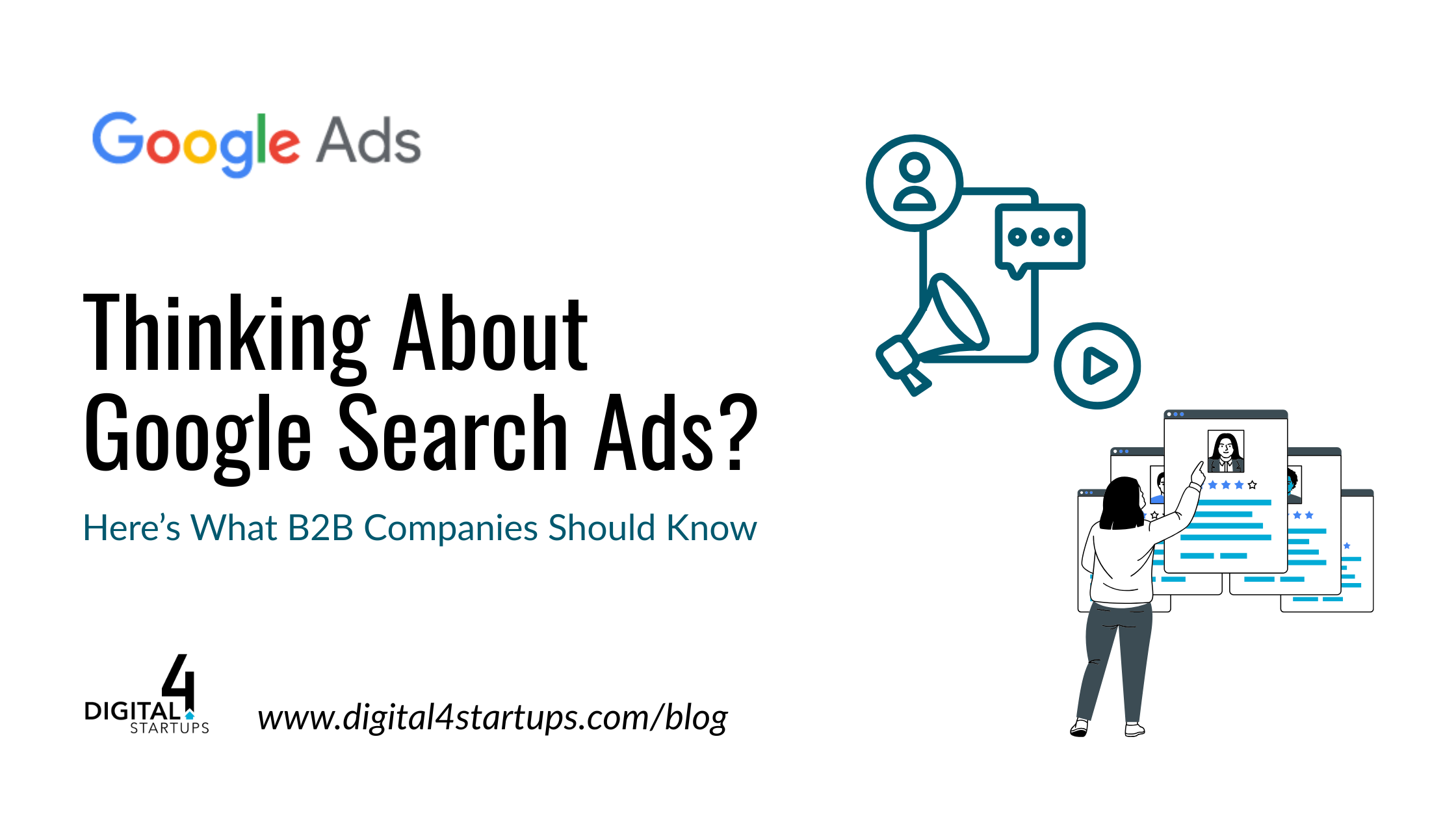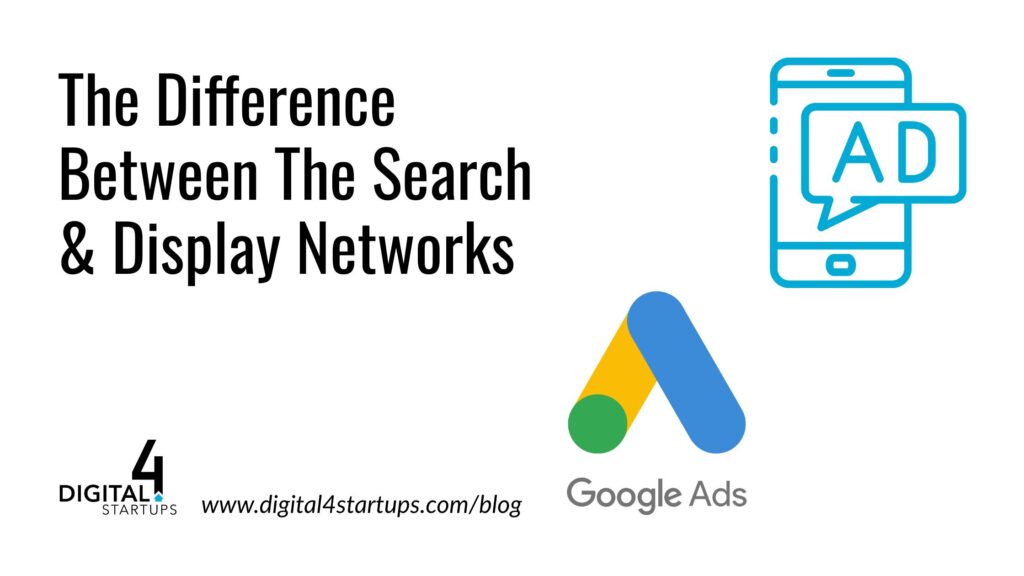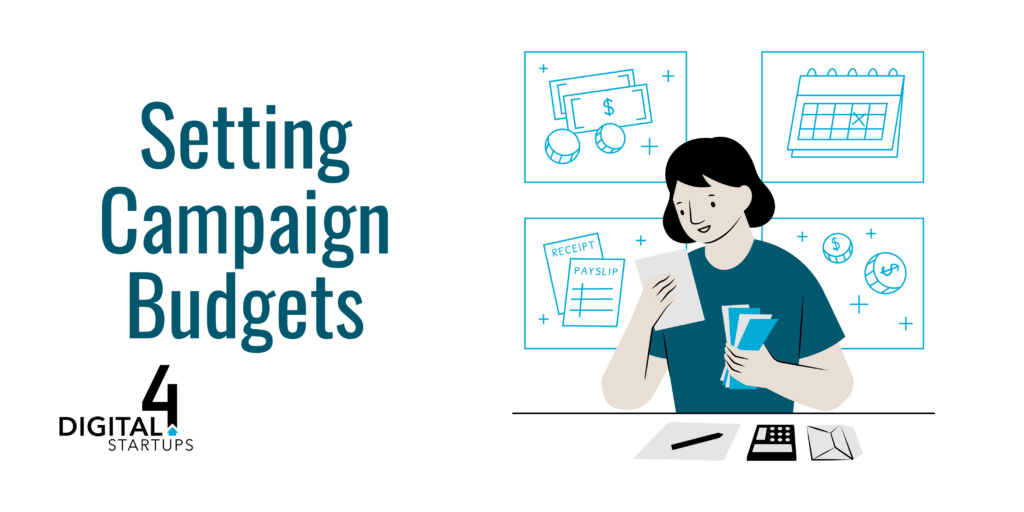
Everything you need to know about google search ads for your b2b company
If you’re a B2B company wanting to dip your toes into digital marketing, a great way to start is with Google Search Ads.
Google Search Ads remain one of the most effective entry points for B2B marketers because they allow you to reach the right people at the right time without wasting spend on broad or unqualified audiences.
In this article, we’ll explore why search campaigns work so well for B2B, walk through best practices for launching one, and show how to manage ongoing performance.
Why are search campaigns a good start for B2B companies?
Search campaigns put you in front of buyers actively seeking solutions. With search campaigns, your ad appears when your prospect is already searching for your services.
This matters because B2B purchases are often research-driven and involve multiple decision-makers. Additionally, Google Ads allows full transparency into metrics such as CTR, CPC, and conversions, making ROI clear. Even ads without clicks boost brand credibility, which is essential in a longer B2B buying cycle.
If you’ve decided you do want to create a Google Ads search campaign, ask yourself these three questions before launching:
- Who are my target customers?
- What are they searching for?
- What do I want them to do once they land on my website?
Once you know the answer to those questions, the process will be much smoother and you’ll most likely get better results.
What are some best practices when starting a search campaign?
Start your search campaign by creating a keyword strategy to understand your audience’s search intent. What terms are they likely using? Conduct thorough keyword research using tools like Google Keyword Planner or SEMrush, focusing on long-tail, high-intent phrases such as “enterprise accounting software for small businesses.”
Always use phrase and exact match types to capture intent cleanly. To avoid irrelevant clicks, build a robust negative keyword list with terms like “jobs”, “free”, “cheap”, or consumer-focused phrases that aren’t related to your business.
While B2B clicks can be costly, they’re also valuable. Begin with at least $20 a day with a spending goal of $2,000–$5,000 every month, guided by bid estimates from the Keyword Planner. Monitor spend as you collect data and optimize toward high-quality conversions.
Write ad copy with your B2B buyer in mind. Your ads should communicate your unique value, target audience, and a direct CTA, e.g., “Schedule a Custom Demo” or “Find Enterprise Solutions Pricing.” Incorporate social proof such as client logos in extensions or case-study references.
Once you receive leads, ensure they are quality leads, and if not, input more tracking data to make sure Google knows which leads you are looking for. Lastly, don’t send clicks to your homepage and instead give people the option to meet you where they are. You want to create multiple options for people to convert, whether that’s a landing page dedicated to phone calls, emails, etc.
Match your ad’s messaging and keywords to your landing page, and make sure your pages load quickly and have a mobile-responsive design. Include strong trust signals like testimonials or case studies, clear headlines, and above-the-fold CTAs.
What are the best ways to manage a search campaign?
When managing your search campaign, use the Search Terms report for ongoing optimization to negate any irrelevant searches and expand on effective keywords.
If impressions are high but clicks and CTR are low, improve your ad relevance. If CTR is healthy but conversions are low, revisit your landing page UX and alignment.
Increasing alignment between keywords, ads, and landing pages also boosts your ads’ Quality Score, reducing CPCs and improving positions. Pair this with Smart Bidding strategies like Target CPA, Maximize Conversions, or Target ROAS to automate bids based on your campaign goals.
Leverage Responsive Search Ads so Google can test multiple headline/description combinations from your list of ad copy to find what works best. For landing pages, implement continuous A/B testing on elements like headlines, CTAs, and form layouts.
You can also re‑engage site visitors using RSAs or display remarketing to drive conversions at a lower cost. Customer Match or Custom Intent lists are also a good tool to target high-value customers or exclude past leads.
In B2B, not all conversions are equal. Track multi-step conversion paths such as ebook downloads, webinar sign-ups, case study views, and demo requests. Then you can feed high-value lead signals back to Google to refine your targeting and bidding.
Conclusion
Google Search Ads are a powerful channel for B2B companies to connect with high-intent prospects.
Success lies in strong keyword intent, relevant ad copy, conversion-optimized landing pages, robust tracking, and smart use of automation, testing, and audience targeting.
Keep iterating and scaling what works. And if you’d like a deeper look at how Google Ads can help your business grow, feel free to reach out for a consultation at info@digital4startups.com.


